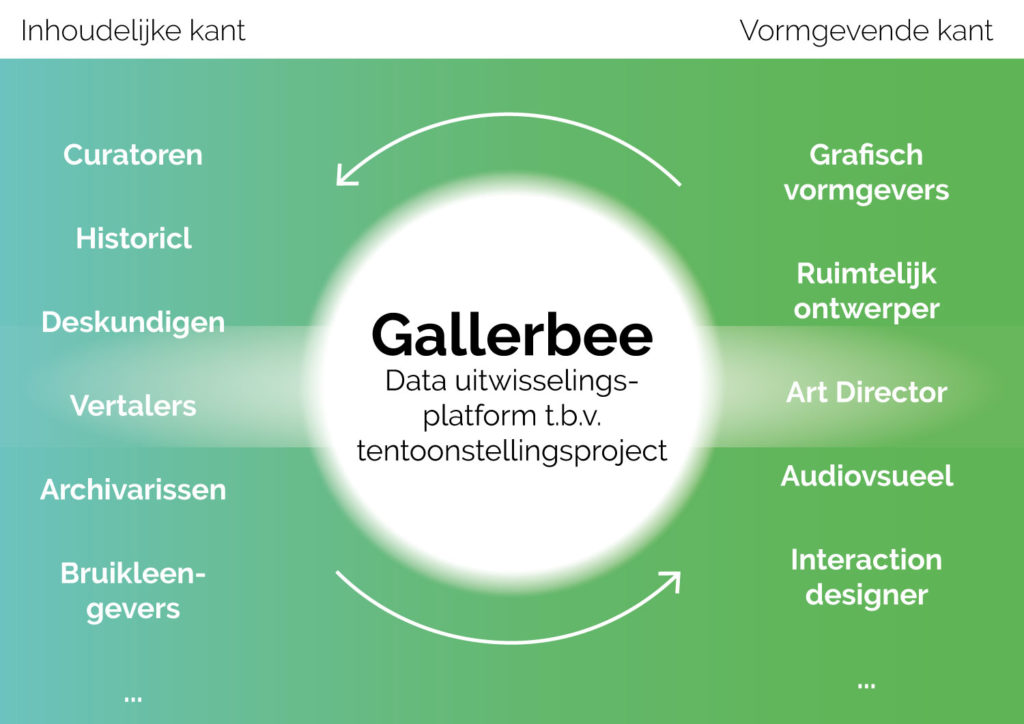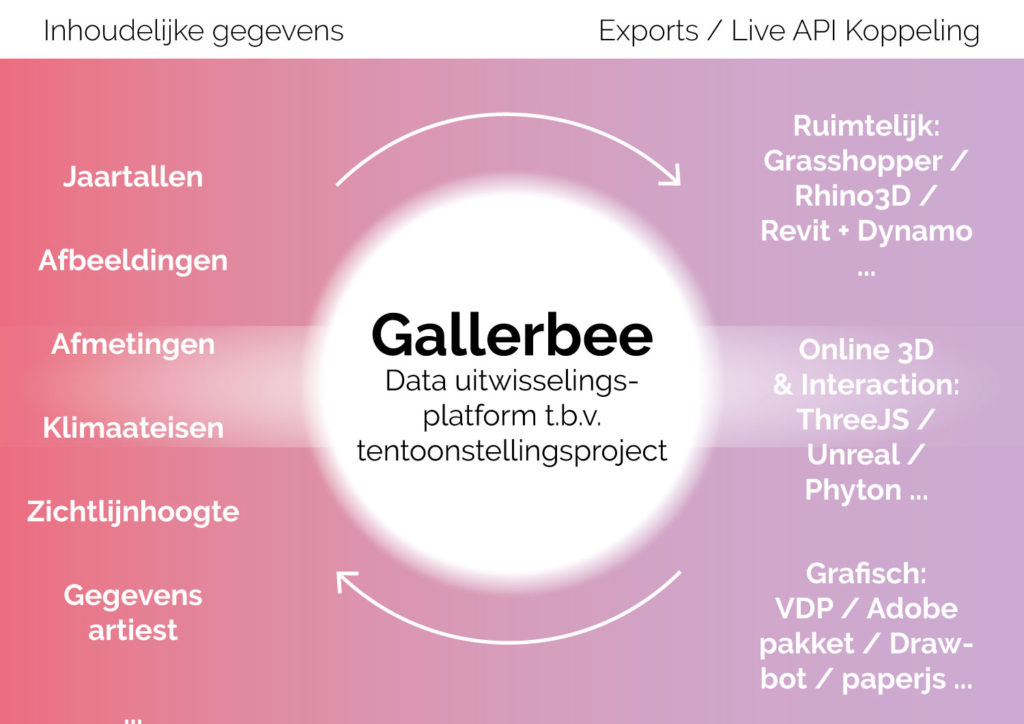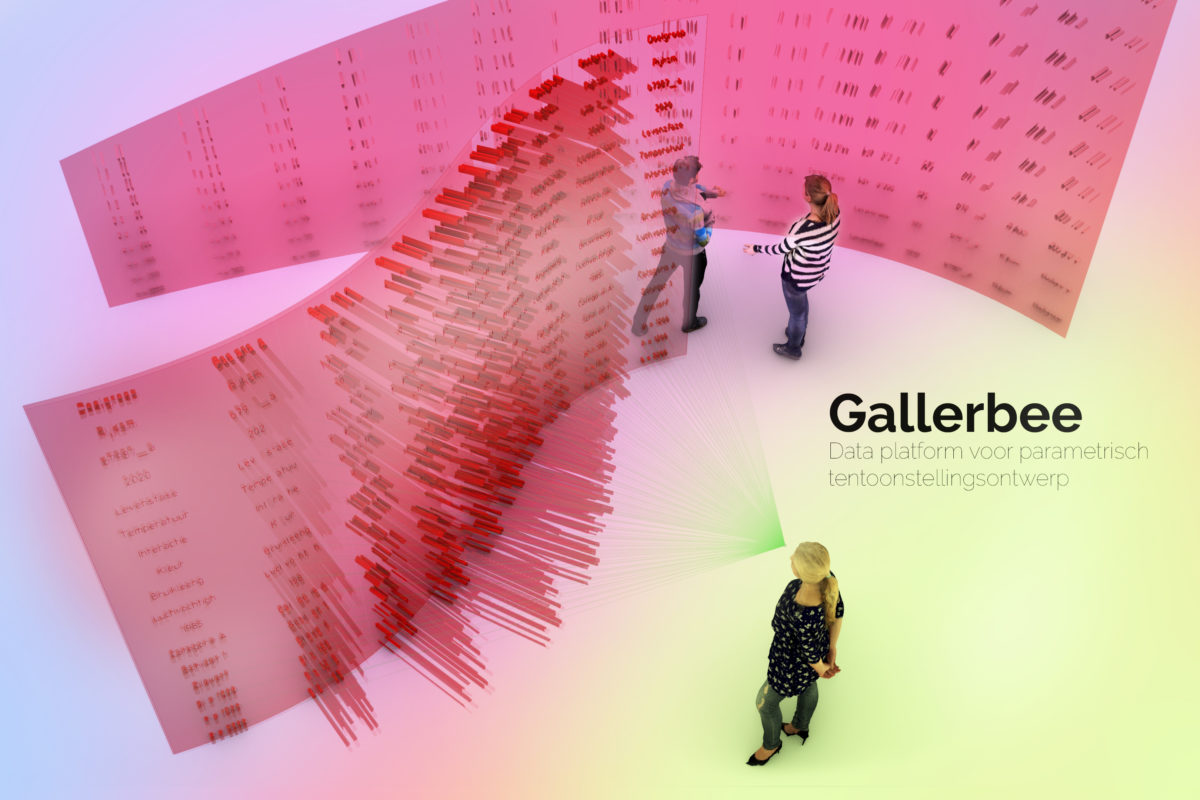In exhibition design and experience design, the subject is leading and the design is supporting. Based on this philosophy, a parametric approach is appropriate: namely, a strategy in which data from the objects determines what the design looks like by means of algorithms. This could be, for example, a graphical timeline generated automatically from the database, or a number of walls that automatically grow or shrink in the planning phase depending on the layout by the curator, a light show that reacts to data from the database about an artist’s life, or automatically generate wall results with a hanging plan. Or perhaps an interaction designer will link the database to unique personal visitor experiences. This research hopes to identify many more possible applications as mentioned above and to explore which data could be shared in the Gallerbee system.

In the long term, Gallerbee can become an online data platform where complete exhibition projects can be managed in terms of content and where data can be exchanged with designers. In that sense Gallerbee can be a tool for those involved to organize all objects in an exhibition project, or it could be called an Exhibition Information Model (EIM).
All data and information about climate management, dimensions, years, style etc stored in one place: Gallerbee. For example, museum objects could also be grouped by theme. Optimal view heights can be indicated. Rich metadata from archives can be included. Images can be linked. Object texts in multiple languages can be managed at the object itself. This data can then be used and shared selectively for layout, spatial design and parametric designs; graphic, spatial or otherwise. Export possibilities to different design applications and links using an API are the techniques by which the data can be shared.

There are already commitments to provide feedback for this research from parties on the content and design side. In order to explore the full potential, StudioFG is looking for even more interested parties! Does it sound interesting and would you like to know more? Or would you like to provide input? Then please contact StudioFG. Friso / StudioFG would love to hear from you!
